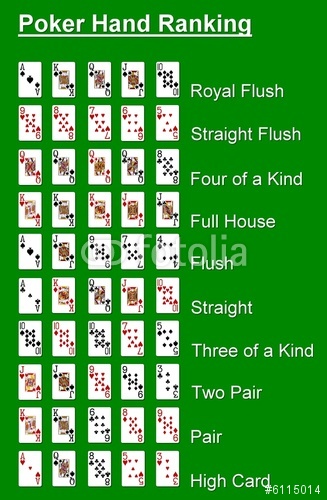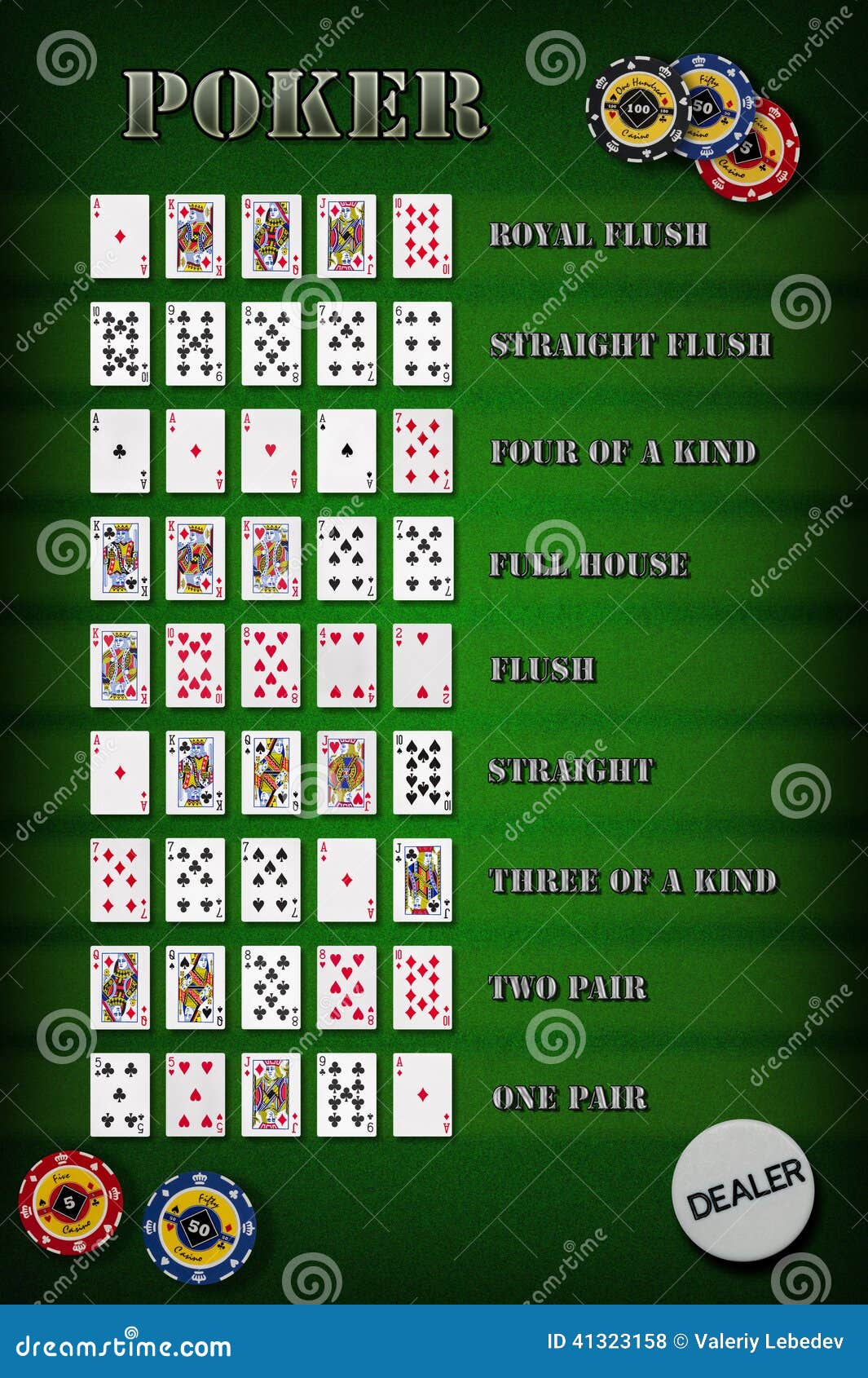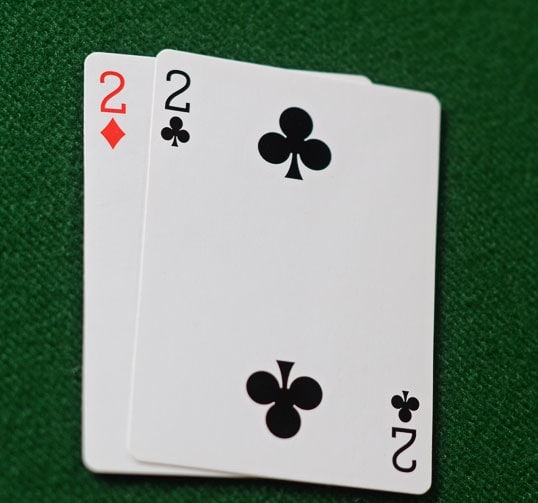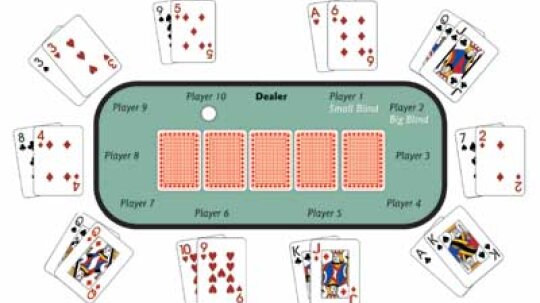Texas Holdem Poker Hand Names
- Texas Holdem Poker Hands Rankings
- Texas Holdem Poker Hands Nicknames
- Texas Holdem Poker Hand Names Free
Pocket Pair Nicknames The term pocket pair is used in poker games such as Texas Hold’em where there are cards dealt to the players (hole cards) and cards dealt to the board (community cards). A pocket pair is when a player has a pair in their hole cards. Texas hold 'em (also known as Texas holdem, hold 'em, and holdem) is one of the most popular variants of the card game of poker.Two cards, known as hole cards, are dealt face down to each player, and then five community cards are dealt face up in three stages. The stages consist of a series of three cards ('the flop'), later an additional single card ('the turn' or 'fourth street'), and a.
The ways a lot of people justify the hands they choose to play can be summed up in two words – hilariously awesome. We’ve heard people mention that they play hands because they’re their favorite hands, because the hands have some really cool and fun names, or that they saw someone else do this, so it had to be smart. These are not just bad justifications; they’re some of the worst. The only thing that is worse (that we do see) is people that have absolutely no justification for why they play the hands they play.
Luckily, we’re going to enter the judgment-free zone and walk you through everything you need to know about starting hand requirements and how to adjust them accordingly to changing conditions.
Learning these nicknames isn't important to the game - it just makes you sound cooler. This isn't a complete list (omitted are the 5 4 'Moneymaker', the 8 4 'Orwell', and the 7 2 'Beer Hand' to name a few). Most of these combinations here are shown offsuit, but unless it specifies - it doesn't matter. So let's get down to it. While Texas Hold’em starting cards have inspired most of the two-card hand nicknames, some have their roots way back in the Wild West draw poker days. The following list contains some of the most popular poker hand nicknames: Nicknames for Hold’em Pocket Pairs Big Slick is.
Why Are Starting Hands Important?
The first decision you’ll make in any poker hand is whether you’re going to play a hand or fold it. Choosing your starting hands is your first opportunity to make a correct decision or make a big mistake. If you choose wisely, you’ll be setting yourself up much better for success through the rest of the hand. More importantly, though, if you make a mistake, you could be setting yourself up for potential disaster.
There are a lot of situations where, if you pick to play the wrong hands pre-flop, you’re going to set yourself up to have the second-best hand, which means it will be hard to fold and won’t ever win you the pot. Too often, people disregard this stage of the hand, as the pots usually aren’t huge until later streets. This is a big, big mistake, and we commend you for taking the time to start at the beginning. Your wallet and your poker career will be very thankful.
Building Ranges
If you were coming here hoping to find a chart that told you exactly what to play from what position, you’re going to be disappointed. While we would love to give you something like that, we feel that it sets you on the wrong course for your game. If you use fixed sets of cards (known as ranges) from each position and disregard table and game conditions, you’re going to be way too rigid to be profitable.
What we’d like to do is walk you through some general thoughts and spend more time talking about the adjustments you should make based on changing conditions. If you Google starting-hand charts, you’re going to find hundreds of examples that are going to be relatively the same. These are a nice starting point, but you need to be well aware that these ranges need to be fluid and ever-changing.
The general idea of these charts will be the following (for a 9 or 10 handed table): In early position, you’re going to want to only play premium hands. This would be hands like 88+ (this means 88 and anything similar that’s stronger, so 88, 99, 1010, JJ, QQ, KK, and AA), AJs+ (this means the same thing, except the small ‘s’ refers to only suited cards, so AJ suited, AQ suited, and AK suited), and AQo+ (this means the same, except the small ‘o’ means offsuit, so AQ off-suit and AK off-suit). We will be using this way of describing hand ranges for the rest of this guide.
Note:In middle position, the charts will tell you to loosen your range up and play more hands. That range is usually something like 22+, A9s+, and A10o+.
In late position, the charts will tell you to open up your range a lot wider to include any pair, any ace, any two broadway cards, suited connectors, and suited kings.
The hands that you defend or play with out of the blinds will vary quite a bit based on the charts that you look at. This is because it’s so dependent on whether or not you are facing a raise, where the raise is coming from, what type of player it’s coming from, and how big the raise is.
This should give you a general idea of what is technically correct poker. You can go much further in depth by using programs and software and fully mapping out what you want your starting ranges to be. Once you have that dialed in, the next thing that you’re going to need to be aware of is how to adjust these ranges based on changing conditions at the table. We’re now going to walk you through as much of this as possible.
Number of Players at the Table
One of the biggest things that people forget to adjust for is how many players are at the table. They’ll usually adjust for this if they are playing a dedicated 6-max (6 people) table, but they will rarely pay attention to this if they are playing a full table that loses some players. Our general ranges we listed above are ones that are designed for a 9- or 10-person table. But what happens if there are 8 people at the table? Or 7? Or 6? Or even less?
The answer is that you need to make adjustments. Let’s first talk about more specifically what we mean when we talk about early position, middle position, and late position. Early position at a full table (9-handed) usually refers to the first three people to act. These are usually known as Seat 1, Seat 2, and Seat 3. Middle position refers to the next two people to act, who are Seat 4 and Seat 5. Late position refers to Seat 6 and Seat 7, who are the cut-off and the button. The remaining two players at the table, in Seat 8 and Seat 9, are the small and big blind.
What happens when there are only six people at the table? Does the person two over from the button become the new early position? Technically, they are the new early position; however, in relation to starting hand ranges, they are not. The best and easiest strategy in these situations is to assume that the early seats are missing. So, you’d imagine that Seat 1, Seat 2, and Seat 3 are gone. This means that, even though you are the first to act, you will play your ranges as if you are Seat 4.
People LOVE to over-adjust for six-handed tables. They assume that they have to start playing insane and play every hand under the sun. In reality, everything works the same as if you were in middle position. You have the exact same number of people behind you left to act. You should treat it as if the first three players from a full table had already folded.
If you’re at a five-handed table and you’re first to act pre-flop, treat it as if the first four players already folded and you are in Seat 5 (even though you will be referred to by others as Seat 1). This strategy ensures that you don’t have to learn a ton of different ranges for each number of people at the table.
Basically, if you’re the button, it does not matter how many players are at the table. Your opening range should be the same as it would be at a nine-handed table. If you’re the cut-off, your ranges should be the same, and so on and so forth. Yes, you will have to adjust if the table is playing differently and they are adjusting incorrectly, but in a complete vacuum, it is the same.
The Activeness and Difficulty of the Table
One of the biggest things that will affect your starting hand ranges is the activity of the table, and the difficulty of your opponents left to act behind you. Let’s dive right into it. If the table is playing very tight and passive, you can look to open up your opening ranges. This means that you can justify opening more hands than you normally would, because you’re not receiving the normal resistance that you should. On the flip side of the coin, if the table is playing very loosely and aggressively, then you may want to look to tighten up your opening ranges.
The idea here is to do the opposite of what the rest of the table is doing. If they’re crazy loose, then there’s no reason to mix it up with marginal hands. They’re going to call and pay you off when you have premium hands, so why not just wait them out?
Regarding adjusting to the difficulty of opponents, this is something that will be up to your personal preference. In general, if the opponents behind you are tougher, you’re going to want to tighten up your opening ranges. This is because they’re probably going to be looking to play back at you quite a bit, and you will be building pots out of position against good players.
On the flip side, if the players behind you are weak and not likely to play back at you, you can look to get involved in some more pots. You should feel more comfortable playing weaker opponents out of position.
Now, as we said, this part is up to your personal preference. Some players love to go to war with better players. They have no problem getting into a big leveling war, and they live for that. In fact, some are good enough that they do well in those situations. For us, we prefer to get our chips from the easier sources, and don’t feel the need to flex our ego. If you’re all about showing off against the good players, then by all means, don’t let us stop you. Just keep in mind that it is not something that we advise you do.
The Conditions of the Situation
In cash game poker, this is not going to be as big of an issue as it is with tournament poker. We will talk about both, though. It’s important that you are always aware of the conditions of the current poker situation you are in. This can have a big effect on how other people choose to play. As we’ve mentioned, you need to be adjusting your ranges based on how other people at the table are playing.
Let’s look at a cash game example first. Let’s say it’s the end of the night and a game is about to break. Several players at the table are stuck and looking to get even. How do you think this is going to affect their pre-flop ranges? Well, we can tell you that they’re going to be calling and raising extremely lightly. They’re going to be trying to force a chance for them to double up or get some of their losses back.
In these situations, you need to know how to react accordingly. You can either tighten down your range, as you know things are going to get crazy, or you can choose to loosen your range a little bit, knowing that you’re much more likely to have them dominated. You can only do this if you’re on your toes and aware of the current situation.

In tournaments, this becomes a lot more prevalent around the bubble of a tournament. Players will either tighten up a ton to try and squeak into the money, or will try to loosen up to take advantage of the tighter players. You need to pay attention and be aware of this and choose how you plan to adjust your pre-flop ranges.
The reason we say this is more important in tournament poker is because the conditions are always going to be changing. As you get into the money, people will begin to play differently as you approach bigger money jumps and the bubble. Being aware of this can present some great opportunities for you to gather some valuable chips and give yourself a better shot at winning the tournament.
Remember, These Are Opening Ranges
This is something we probably should have pointed out sooner, but better late than never. These ranges all have to do with you being the first person to enter the pot. They are assuming that no one else has limped in or has opened the pot for a raise.
If someone else has come in for a raise, you need to assess what you think they are holding. If you feel that they’ve got a better hand, then you need to get rid of your cards, unless you have a speculative hand that you think you can crack them with. Discussing pre-flop calling/3-bet/4-bet/limping ranges is something that we will get into in more depth in later sections of our strategy section.
For now, as a general rule of thumb, make sure that you are calling with better hands than you are opening with. It is much better to open with a looser hand than it is to be calling a raise with it. Again, we will go much more into this as we get deeper into the strategy section, but we want you to have a general idea of how to get started. Take the ranges we’ve given you, tighten them up quite a bit, and use those as your calling ranges pre-flop. This is drastically oversimplified, but will definitely get you started until we move into the more advanced concepts.
Things That AREN’T Standard
Just because something is the right thing to do does not mean that everyone else is going to be doing “the right thing.” It also does not mean that it’s always the right thing for you to do. There are times where you’re going to have to mix up your pre-flop starting ranges to make sure that you don’t become too predictable. This is known as balancing your range.
If someone knows that you only play x, y, and z from early position, it’s going to be hard for you to get action. What you’ll have to do is occasionally mix in some hands that are not in the standard guidelines so that your opponents know that you’re capable of getting frisky with more than just premium hands. Once they know you aren’t always by-the-book, you become much tougher to play against.
For example, in the early days of poker, if someone raised from under the gun (Seat 1), you knew that 99% of the time they had a super-premium hand. People started noticing this and started trying to exploit it. They began opening with hands like suited connectors from under the gun. People were giving them credit for monster hands and allowing them to run over the table. They also never gave them credit for having suited connectors, which allowed them to win some big pots with a disguised hand.
Obviously, this does not fall anywhere on the range considerations we mentioned. It’s not standard. But it allowed players to win some big pots, steal some more pots, and also get paid when they had premium hands from under the gun. Balancing your range is not that important in tournaments, as you aren’t playing the same people as often, but it becomes extremely important in cash games where you’re playing against the same opponents over and over again.
Putting It All Together

This should be a good primer for you on pre-flop opening ranges and how to adjust according to the current conditions. This may take a while for you to get the hang of, but once you do, it’s going to be a huge piece for the success of your game. Just remember to not turn into a robot. Remember that pre-flop ranges (or all ranges, for that matter) should be somewhat fluid. If you’re ever unsure on a hand, opt for the fold for now. Folding is a much smaller and less costly mistake than getting involved in a hand with cards you shouldn’t be.
Take your time with this, and practice will help a lot. Remember, just because you know what is right does not mean that everyone else does. If you see people winning pots with weird hands that you know are wrong, don’t let that affect the way you play. Take note that it is how they play, but don’t let it ruin your game.
If you are serious about poker, or just really love the game, it is fun to know about it as much as possible. On today´s post, I´m going to deal a little more poker trivia for you. Knowing the most common Texas Hold´Em poker hand names gives you credit as a poker player, since most of the active poker players know at least some of these terms.
These poker hand names are more like nicknames, they are not “official” names. However, at poker tables players use these terms all the time. Many of these names may seem a little absurd or funny. Well, they are funny. They are nicknames, after all. This is a list of the most popular Texas Hold´Em hand nicknames from A to W.
A
AMERICAN AIRLINES
AA
Probably the most common nickname for the best Texas Hold´Em starting hand, pocket aces, is the name of an airline.
ANNA KOURNIKOVA
AK
Ace King has received a nickname from the Russian tennis player, because just like Anna Kournikova, Ace King “looks good, but never wins”. Obviously, this is not quite true. Against any two cards, Ace King wins around 66% of the times.
B
BARBARA HUTTON
T5
“A five and a dime” are named after the dime-store heiress. Ten Five is not a great poker hand, and Hutton did not do well in life. Hutton was “a poor little rich girl”, an unhappy heiress. The most famous of her seven husbands was the film star Cary Grant.
BASKIN ROBBINS
A3
Ace Three is named after the American ice cream chain, because they have 31 flavors of ice cream.
BEER HAND
72offsuit
It is better to have a beer than play this hand, so it is called a beer hand.
BITCHES

Obviously, this refers to pocket queens, although there are other names for this great pair too.
BLACK JACK
AJ
BRODERICK CRAWFORD
T4
BULLETS
AA
C

COLT 45
45
COMPUTER HAND
Q7
I do n´t see the logic of calling it a “computer hand”, but Q7 is exactly middle-ranked starting hand between AA and 72offsuit.
COWBOYS
KK
COWGIRLS
CRABS
33
I love it when poker hands are named after animals! Pocket threes do look like two crabs, right?
D
DARTH VADER
4♠4♣
I do n´t know if this is a very common one, but as a Star Wars fan I just had to mention it. The “dark fours” sounds like “dark force”, so it´s called Darth Vader. Of course!
DEAD MAN´S HAND
A8
Wild Bill Hickock was shot at the poker table holding this hand.
DEUCES
22
“Deuces never loses.”
DIMES
TT
DOLLY PARTON
95
“Working nine to five.” Poker pros usually try to avoid that, so maybe you should avoid this hand too?
DOYLE BRUNSON
T2
Ten two is usually a poor poker hand, but it is named after the legendary poker player Doyle Brunson, because he won a World Series Of Poker championship twice with this hand (1976 and 1977)!
DUCKS
22
Pocket twos are called ducks, because they look like two swimming ducks. Do n´t they?
E
ELVIS PRESLEY
KK
The Kings are also named after “The King”.
F
FISHHOOKS
JJ
Can you actually hook the fish with pocket jacks? At least they look like two hooks.
H
HOCKEY STICKS

77
J
JACK DANIELS
J7
JACKSON FIVE
J5
JESSE JAMES
54
K
KATIE
KT
This poker hand nickname makes more sense to me than many of the other ones. When you pronounce “KT”, it sounds like “Katie”, hence the name.
KING CRAB
K3
There´s a king next to a crab, so it´s called king crab, right?
KING KONG
KK
King Kong is what the second best starting hand in Texas Hold´Em is often called.
KOJAK
KJ
Kojak was an American crime TV show in the 1970´s.
L
LADIES
LOLLIPOP HAND
AQ
“Looks good, but often gets licked.”
N
NEWLYWEDS
KQ
Mr and Mrs.
P
Phil Hellmuth
99
Phil Hellmuth won the World Series Of Poker Main Event 1989 with pocket nines.
R
RAQUEL WELCH
38
This hand has been named after the curvy actress.
Texas Holdem Poker Hands Rankings
ROUTE 66
66
Texas Holdem Poker Hands Nicknames
S
SAILBOATS
44
Texas Holdem Poker Hand Names Free
Sail to victory with pocket fours! They look like two sails, so they are called sailboats.
SNOWMEN
88
Pocket eights look like snowmen, so that´s what they are called. I wish all poker hand nicknames were that easy to figure out!
SPEED LIMIT
55
SUNSET STRIP
77
W
WAYNE GRETZKY
99
The famous hockey player´s player number was 99.
Do you know any other funny poker hand nicknames? Which one is your favorite? Have you invented any own nicknames for poker hands? Please share them on the comment section below!